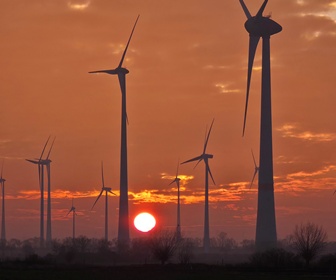The UK Government has published its Onshore Wind Strategy, setting out how it aims to significantly expand onshore wind energy capacity as part of its broader Clean Power 2030 targets. The strategy outlines more than 40 joint actions by government and industry designed to deliver between 27GW and 29GW of onshore wind capacity by 2030—almost doubling the current installed capacity of 14.8GW.
The strategy is the outcome of the Onshore Wind Taskforce, established to identify and address the barriers to wind deployment. The taskforce consulted over 300 organisations to develop 42 actions across six key areas: planning, community engagement, aviation and defence, supply chain and workforce development, grid networks, and market access.
Policy changes and planning reform
A core component of the strategy is a commitment to reform the planning system to enable more efficient delivery of projects. This includes a consultation on the use of permitted development rights to support the deployment of small-scale turbines and repowering existing sites. These changes aim to streamline approval processes, particularly in England, where planning restrictions have historically limited development.
Onshore wind deployment in England stalled for nearly a decade following the introduction of restrictive planning guidance in 2015. Although this was not a formal ban, it significantly reduced new project activity. With the lifting of this restriction, the government now aims for England to contribute around 2GW towards the 2030 target.
Grid and market access
Grid connection delays have also been identified as a key constraint. The strategy calls for ambitious reforms to improve connection times and ensure that new generation can be integrated into the network. This will require coordination between wind developers, grid operators, and the energy regulator.
Routes to market, such as access to Contracts for Difference (CfD) and corporate power purchase agreements, will also be strengthened to ensure financial viability for projects across the UK.
Defence and aviation coordination
Past onshore wind projects have frequently been delayed or blocked due to conflicts with defence and aviation infrastructure. The Ministry of Defence will work with energy stakeholders under a “mission-driven” approach to resolve these issues more effectively, enabling greater project approval without compromising national security.
Public investment and supply chain development
The government’s publicly owned company, Great British Energy, will also play a role in investing in and developing onshore wind projects. The strategy includes commitments to expand domestic supply chains and grow the skilled workforce needed to support construction, operations, and maintenance.
Future outlook
With 30GW of projects in the development pipeline, the UK is positioned to meet the upper end of its 2030 target—if reforms are implemented effectively. The government estimates that without intervention, deployment would have remained limited to an additional 10–12GW based on historical growth rates.
The strategy positions onshore wind as a central pillar of the UK’s future energy mix. By accelerating deployment, the government aims to reduce reliance on fossil fuels, improve energy security, lower costs for consumers, and stimulate regional job creation.










